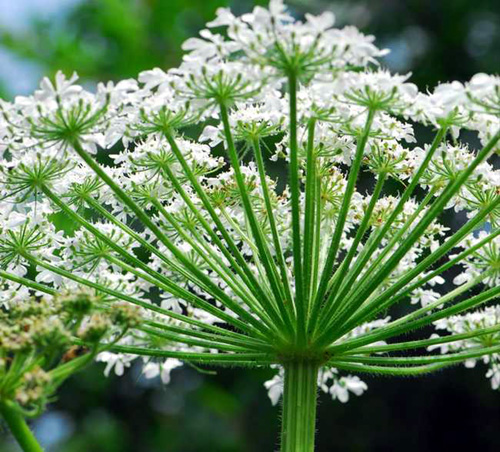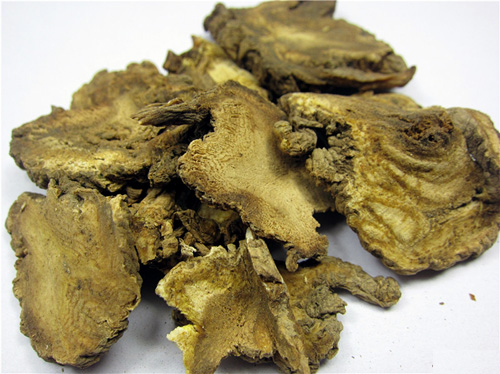The source is from the root of Angelica pubescens Maxim. f. biserrata shan. et Yuan, family Umbelliferae. The medicinal material is mainly produced in Sichuan, Hubei, Anhui provinces, etc.. Dug and collected in the end of autumn and early stage of spring, dried in the sun, cut into pieces and the crude form is used.
Medicinal Properties:
Pungent and bitter in flavor, warm in nature and attributive to the liver and bladder meridians.
Actions:
Expel wind and dampness, stop pain of Bi-syndrome and relieve exogenous pathogenic factors.

Application
1. It is used for Bi-syndrome of wind-cold-dampness type with pain, especially in the back and the lower half of the body with soreness and pain due to dampness. For general arthritis, it is combined with Qianghuo (Rhizoma et Radix Notopterygii ) and Qinjiao (Radix Gentianae Macrophyllae); for prolonged Bi-syndrome accompanied with insufficiency of the liver and kidney, and deficiency of qi and blood, combined with Sangjisheng (Ramulus Taxilli), Duzhong ( Cortex Eucommiae ) , Niuxi (Radix Achyranthis Bidentatae) and others that tonify the liver and kidney, such as Duhuo Jisheng Tang (Decoction).
2. For superficial syndrome of wind-cold type with dampness-syndrome, which is manifested as aversion to cold and fever, headache, general heavy sensation of body, sore and painful lumbus and legs, combined with Qianghuo (Rhizoma et Radix Notopterygii), Fangfeng (Radix Saposhnikoviae) and Jingjie (Herba Schizonepetae).
Usage and Dosage:
3 - 10 g is used in decoction for oral use.
Explanation:
Duhuo (Radix Angelicae Pubescentis ) and Qianghuo ( Rhizoma et Radix Notopterygii) can all expel wind, dampness and cold, and relieve pain, treat rheumatic arthralgia with pain and superficial syndrome of wind-cold-damp type. But Qianghuo (Rhizoma et Radix Notopterygii) tends to treat superficial syndrome and has strong action of promoting sweating to expel cold, so it is often used to expel wind and dampness and treat Bi-syndrome of the upper part of the body; Duhuo (Radix Angelicae Pubescentis) has weaker action of eliminating exogenous pathogenic factors and works on the side of expelling wind and dampness, and of relieving pain of Bi-syndrome, so it is more on the side of treating pain of Bi-syndrome in the lower part of the body. Both Duhuo (Radix Angeticae Pubescentis) and Qianghuo (Rhizoma et Radix Notopterygii) can combine together to treat general joint pain so that better effect will be achieve.








